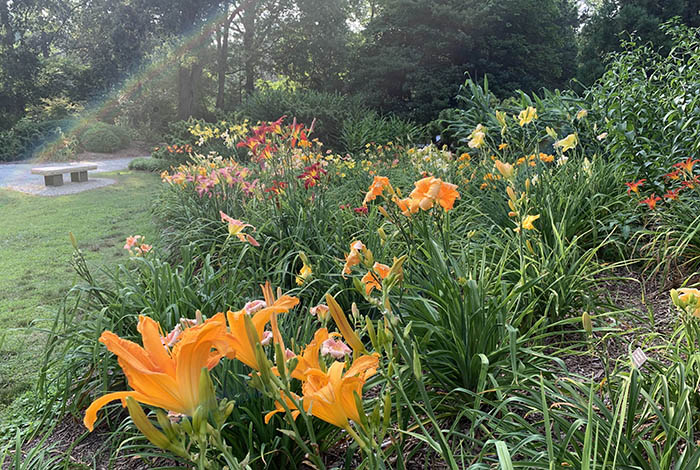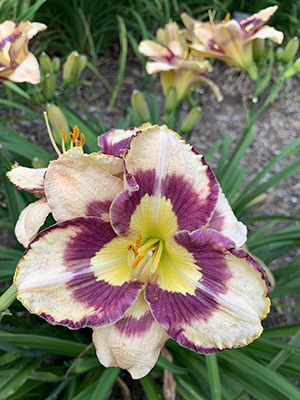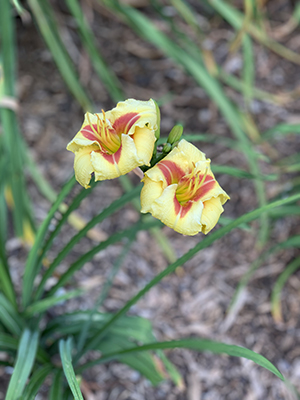Garden Talk

Botanical name: Hemerocallis spp.
Common name: Daylily
Family name: Xanthorrhoeaceae (Grasstree Family)
Native range: Eastern Asia
Location in Duke Gardens: Culberson Asiatic Arboretum
USDA Hardiness Zones: 3-9
By Katherine Hale
Marketing & Communications Assistant

Daylilies (Hemerocallis spp.) are often considered “the perfect perennial”—beautiful, adaptable, persistent and hardy. This last trait in particular makes them especially popular in northern climates with harsh winters, but they also thrive in the hot and humid Southeastern United States. Daylilies are famous as the quintessential “pass-along” plant—once settled in the landscape, they multiply rapidly, producing dozens of clonal offspring that can be dug up, divided and shared with friends. Given all this, it’s not surprising that daylilies are one of the most commonly grown plants in North America, and they are easily identified even by non-gardeners.
True to their name, most daylily flowers bloom for a single day, though the overall bloom period of each plant extends for several weeks as new flowers continue to open. The “lily” part is a bit more misleading—though they resemble true lilies (Lilium spp.) and were originally placed in the lily family, more recent genetic analysis has determined that daylilies belong to one of the many smaller and more obscure plant families formerly considered part of the lily family.
There are 16 species of wild daylilies across eastern Asia, two of which have naturalized extensively in North Carolina. One is the orange daylily (H. fulva), also known as the “ditch lily” for its habit of growing along roadsides. The other is the lemon lily (H. lilioasphodelus, previously known as H. flava), which has smaller yellow flowers. These two species are also the parents of tens of thousands of daylily cultivars in a fantastic array of colors and shapes, often with fragrant scents, multiple petals with edged “ruffles,” a contrasting “eye” at the center of the flower, and/or a glittery appearance known as “diamond dust.” Add to this the thousands of new daylily cultivars registered each year with the American Daylily Society by increasingly ambitious breeders, and the sky really is the limit! A handful of daylily species also defy expectations by blooming at night, most notably the citron daylily (H. citrina), whose flowers open late in the day and closes early the next morning.

Photos from top: A rainbow adjacent to the daylily beds in the Culberson Asiatic Arboretum; the award-winning cultivars 'Spacecoast Sea Shells' and 'Mayor of Munchkinland'; the daylily beds in peak bloom in late June. All photos by Orla Swift.






